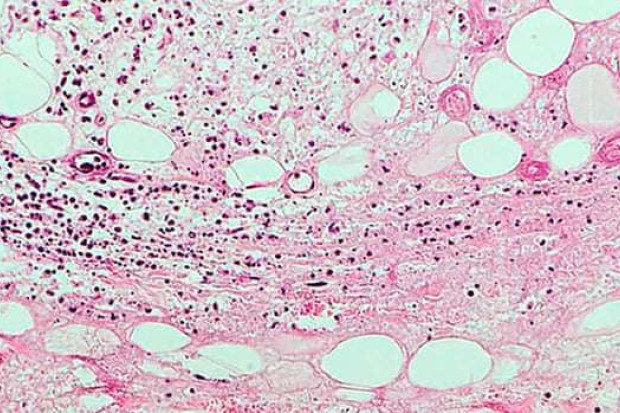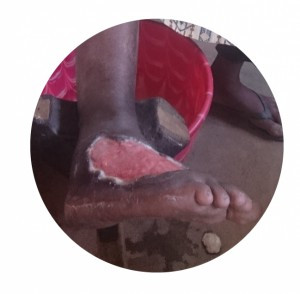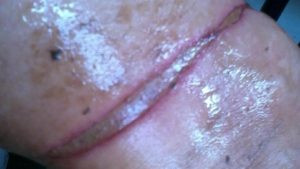General News
13 January, 2020
New case of flesh-eating bacteria detected in Far North Queensland
New case of flesh-eating bacteria detected in Far North Queensland

Warning may contain graphic content:
A new case of a mysterious flesh-eating bacteria has been detected in Far North Queensland.
A person from Mossman has been confirmed to have Daintree ulcer, a slow-growing, tissue-destroying skin disease. (Also known as Buruli ulcer, and Bairnsdale ulcer)
"The mechanism of transmission of this organism is not clear, despite extensive research, but may be related to contact with soil or water or insects," Tropical Public Health Services Cairns director Dr Richard Gair said.
"While research is ongoing into how the infection is transmitted, people are advised to avoid contact with soil or water where possible, particularly in the Daintree/Mossman area and to avoid mosquito bites by covering the body with clothing and using insect repellent."
Authorities are warning people in the area to avoid contact with water, soil and protect themselves against mosquito bites, but still don't know exactly how the organism spreads.
Doctors are concerned because, in the past two years, three cases of the usually geographically confined disease have emerged in the Atherton Tablelands, south of its usual catchment area in far-north Queensland.

While the disease is much rarer in Queensland than Victoria, with an average of two cases per year, there are occasional spikes, such as in 2011 when 60 cases were recorded. Victoria saw a record 340 cases of the disease in 2018 and is approaching a similar number for 2019.
Internationally renowned Buruli ulcer expert Prof Paul Johnson said that despite the comparatively low number of Queensland cases, the movement of the disease outside of its normal range was a concern.
“We are used to the ulcer moving in Victoria, and what is interesting is it hasn’t moved much up there in Queensland over the years,” Johnson, of the University of Melbourne, said. “Now the cases diagnosed in the Tablelands are not a dramatic change of area, that’s still quite close to the Douglas Shire, but any move is worth reporting to alert doctors to keep an eye out. The disease is really quite treatable if it is caught early. But doctors can’t treat it if they fail to identify it because they’ve never seen it.”

A total of six cases of the infection were identified in the Far North last year, most in the Daintree/Mossman region where it is believed to be endemic.
The disease, caused by the bacterium Mycobacterium ulcerans, is closely related to tuberculosis and leprosy and is treated with antibiotics and surgery where necessary.
Without a clear indication of how it spreads, authorities have not been able to eradicate it.
In Australia, cases have been isolated to Far North Queensland and Victoria's Bellarine and Mornington peninsulas, where incidences have been increasing each year since 2013.
Prof Tim Stinear, the scientific director of the Doherty Applied Microbial Genomics Centre, said "it was concerning the disease had moved from low-lying areas of Queensland and into the Tablelands."



